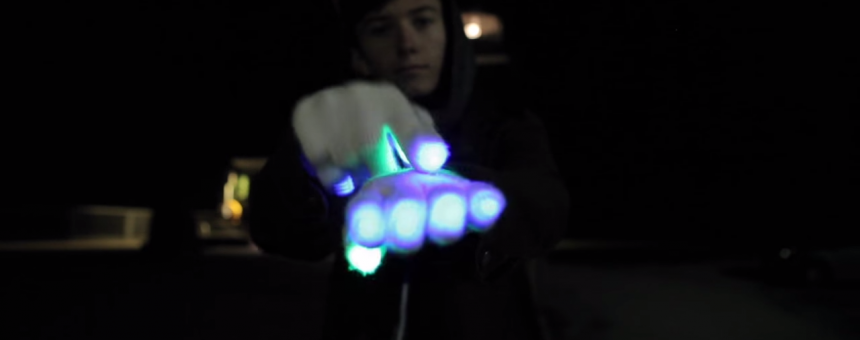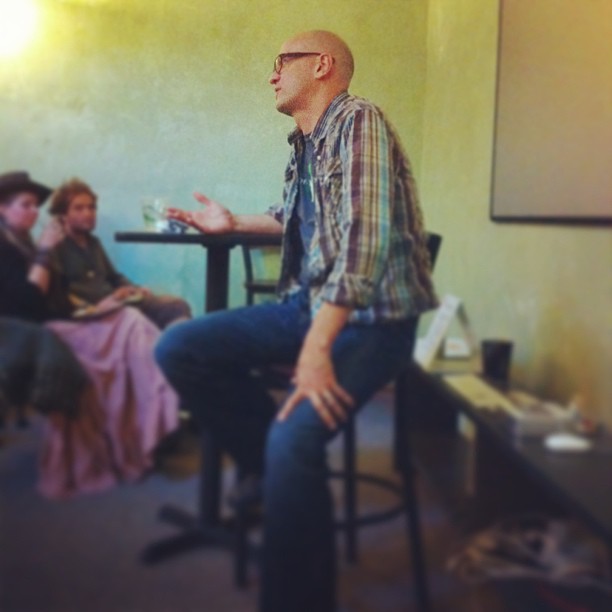With a Kickstarter campaign that fully funded in 15 minutes Zohar Wouk is not on a typical teenager’s path. He veered from that path toward the end of 11th grade when he left school to attend an entrepreneurship boot camp at Draper University. It was there that he first came up with the idea for Futuristic Lights — and the passion to advance technology for the art of Gloving.
I had the chance to talk with Zohar and this is what. I learned.
When Zohar and his then 9th grader coder AbeAbe Karplus attended the 2014 TechRaising weekend they had been working on the prototype for their first product for almost a year. Zohar’s mother participated at TechRaising the previous year and built Snappost. From what Zohar heard and observed, he thought to bring his idea to TechRaising to see how far they could push themselves and how much they could accomplish in the two days. They ended up getting much more out of the weekend than a bunch of code written.
This was the first time they had shared the project publicly and they gained many valuable insights from experts — from UI designers to VC’s. This helped them clarify where they were going with the project. But most of all, the most lasting outcome of the weekend was connecting with the Santa Cruz tech community that has continued to offer support, insights, feedback, and connections.
Since TechRaising 2014, Zohar and Abe added Abe Jellinek, Pawel Faryna and Michael Chubbs Marchetteto to their team and they honed their focus to a single product — The Kinetic under the company Futuristic Lights. They have plans for additional product after they launch and learn from The Kinetic.
Being young, fresh, broke entrepreneurs, they didn’t have the funds to finance the first round of manufacturing. They decided that Kickstarter would be an ideal vehicle for raising funds for The Kinetic. Kickstarter is a great way to reach groups of people that are passionate about niche products. Products that they feel they have a role in making possible and products they want to use themselves. This gives the group a reason to rally around the project. If the project doesn’t meet it’s funding goal it doesn’t happen.
The gloving community, is active and vibrant — and certainly rallied around the Kinetic. One of the reason’s for the success of the Futuristic Lights Kickstarter campaign is the active curation of, and communication with, that community.
Much of this happens on Facebook. Zohar’s team made the launch of the Kickstarter campaign an anticipated event – much like the opportunity to buy tickets to a concert that is surely going to sell out. They created videos highlighting each of the 6 modes of the gloves and two more teasers about the project. Each of these videos was rolled out over the course of a month. Soon the gloving community was waiting in anticipation for the next video revealing another feature.
When they announced the launch date and time they combined it with a give away of the product. Sharing the post was the ticket to enter the give away. The post was shared 1000 times and had a reach of almost 70,000 people.
The gloving community was so primed and excited for the launch that they were waiting with rockstar fan anticipation for the launch. Like standing on line for concert tickets to go on sale they were waiting online for the Kickstarter to begin. They were there to click as fast as they could to get one of the early bird specials. And boy did they go fast.
Still, the team wasn’t sure what would happen. They thought the community was excited but had no idea how much. Despite the whole team’s hard work, the five were very nervous that the project wouldn’t get funded. They guessed they would raise about $5000 the first day and would consider that a win. For them, it was surreal watching the numbers climb and climb. Their initial $20k goal was the absolute minimum required to produce the basic product. With every dollar as the campaign grows they gain confidence in the quality of their ability to deliver a great product.
The Kickstarter campaign runs until Jan 11, 2015. Click here to light up your world.
photo: FuturisticLights.com


